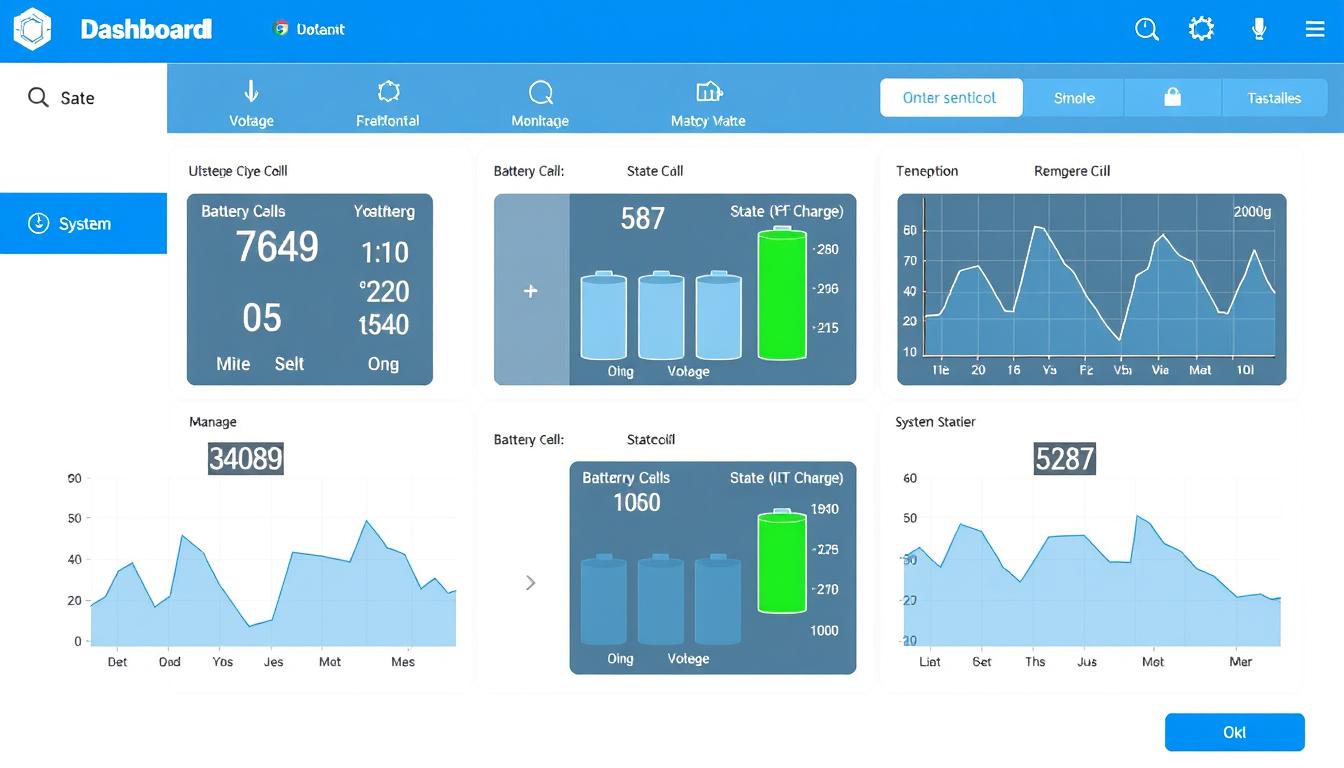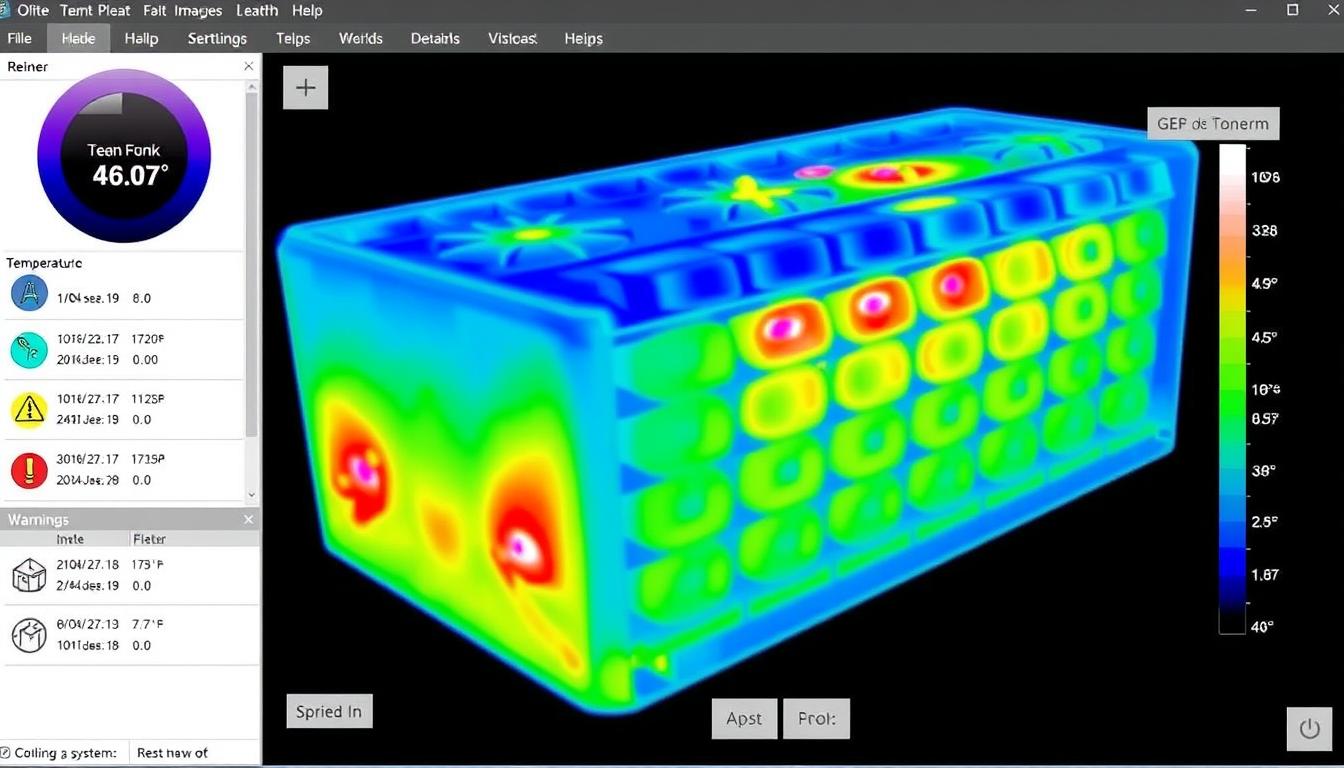
Battery management software (BMS) has become an essential component in modern energy systems, from electric vehicles to renewable energy storage and IoT devices. As battery technology advances, the software that monitors, controls, and optimizes these power sources has evolved into sophisticated systems that significantly impact performance, safety, and longevity. This comprehensive guide explores the critical features, benefits, and emerging trends in battery management software that engineers and decision-makers need to understand in today's rapidly evolving energy landscape.
Battery management software refers to specialized applications that monitor and regulate the charging and discharging processes of battery systems. Unlike simple battery indicators, modern BMS solutions provide comprehensive oversight of battery health, performance, and safety parameters through sophisticated algorithms and real-time data analysis.

At its core, battery management software serves as the intelligence layer that ensures optimal battery operation while preventing potentially dangerous conditions. For large-scale applications like electric vehicles or grid storage, BMS is not merely beneficial—it's essential for functional safety, performance optimization, and maximizing return on investment in expensive battery systems.
Effective battery management software incorporates several critical features that work together to ensure optimal battery performance and safety. Understanding these core capabilities is essential for evaluating different BMS solutions.
Precise voltage monitoring is fundamental to any BMS. The software continuously tracks voltage at both individual cell and overall pack levels to ensure operation within safe parameters.

Advanced BMS solutions implement sophisticated algorithms that can:
Temperature control is critical for battery performance and safety. Battery management software monitors temperature across the battery pack and implements control strategies to maintain optimal operating conditions.

Key thermal management capabilities include:
Accurately determining a battery's state of charge (SOC) is one of the most complex yet essential functions of battery management software. Unlike a simple fuel gauge, SOC estimation must account for numerous variables that affect available capacity.

Modern BMS employs several methods for SOC estimation:
Cell balancing is crucial for maximizing battery pack capacity and lifespan. Even minor manufacturing variations can lead to significant imbalances over time as cells charge and discharge at slightly different rates.

Battery management software implements balancing through:
Implementing sophisticated battery management software delivers numerous advantages across performance, safety, and economic dimensions. These benefits make BMS an essential component of any serious battery-powered application.
Advanced battery management software significantly enhances energy efficiency through intelligent control algorithms and precise monitoring capabilities.


Safety is paramount in battery systems, particularly for high-energy applications like electric vehicles and grid storage. Battery management software provides critical protection mechanisms.
Beyond technical benefits, battery management software delivers significant economic advantages through extended battery life and optimized performance.

Despite its benefits, implementing battery management software presents several challenges that organizations must address to achieve optimal results.
Accurate calibration is essential for BMS effectiveness but presents significant challenges:

The battery management software landscape continues to evolve rapidly, with several emerging trends poised to transform the industry in coming years.
Artificial intelligence is revolutionizing battery management through advanced predictive capabilities and self-optimizing algorithms.

Edge computing is transforming how battery data is processed and analyzed, enabling faster response times and reduced bandwidth requirements.

Environmental considerations are driving new approaches to battery management that prioritize resource efficiency and second-life applications.

Battery management software implementations vary significantly across industries, with each application presenting unique requirements and challenges.
Tesla has pioneered sophisticated battery management software that has set industry standards for electric vehicle applications.

Key features of Tesla's approach include:
Large-scale battery installations for grid support require specialized battery management approaches to handle massive capacity and critical reliability requirements.

Grid-scale BMS implementations typically feature:
Various software platforms offer different approaches to battery management, each with distinct strengths and limitations.
| Software Solution | Primary Application | Key Features | Integration Capabilities | Pricing Model |
| Simulink Battery Management Library | R&D and Algorithm Development | Model-based design, simulation environment, algorithm testing | MATLAB ecosystem, HIL systems, code generation | License-based with academic options |
| Orion BMS | EV and Performance Applications | Real-time monitoring, CAN integration, thermal management | Vehicle systems, chargers, displays | Hardware + software package |
| Battery Genius Pro | Industrial Energy Storage | Predictive analytics, remote monitoring, fleet management | SCADA systems, cloud platforms, ERP systems | Subscription with capacity tiers |
| ElithionPro | Custom Battery Packs | Configurable parameters, balancing options, diagnostics | Custom hardware, third-party BMS boards | One-time license + support |
| SaberRD | BMS Design and Simulation | Circuit simulation, thermal modeling, control system design | PCB design tools, system simulators | Enterprise licensing |
Battery management software extends lifespan through several mechanisms:
Studies have shown that properly implemented BMS can extend battery life by 30-50% compared to unmanaged systems, representing significant cost savings over the battery lifecycle.
Several industries have become particularly dependent on advanced battery management software:
Each industry has developed specialized BMS approaches that address their unique requirements, though core principles remain consistent across applications.
Retrofitting BMS to existing battery systems is possible but presents several challenges:
The most successful retrofits typically involve adding external monitoring and basic protection rather than full cell-level management. For critical applications, replacing the entire battery system with an integrated BMS solution is often more reliable and cost-effective in the long term.
Battery management software has evolved from simple protection circuits to sophisticated systems that fundamentally transform how we utilize energy storage. As batteries become increasingly central to our energy infrastructure, transportation systems, and portable devices, the importance of advanced BMS will only grow.
The convergence of artificial intelligence, edge computing, and sustainability imperatives is driving rapid innovation in this field. Organizations that invest in sophisticated battery management software today will be better positioned to optimize performance, enhance safety, and reduce total cost of ownership across their battery-dependent operations.
As we look toward a future where batteries power everything from vehicles to the electrical grid itself, battery management software will continue to be the critical intelligence layer that enables this energy transformation. Engineers and decision-makers who understand these systems will play a vital role in building a more efficient, sustainable, and electrified world.
Want to dive deeper into battery management technology? Download our comprehensive guide with detailed implementation strategies and best practices.
Download Free BMS GuideReady to implement advanced battery management? Download our BMS implementation checklist to ensure you're covering all critical aspects.
Get Implementation ChecklistLearn how to overcome common implementation hurdles with our expert-developed troubleshooting guide for battery management systems.
Download Troubleshooting GuideSubscribe to our newsletter for the latest developments in battery management software and energy storage technology.
Subscribe to Newsletter